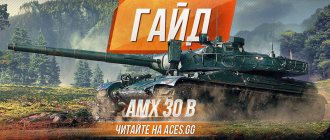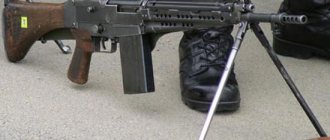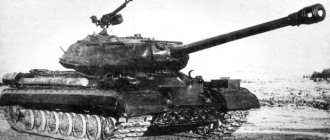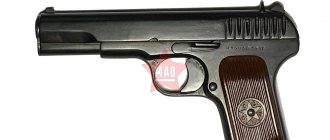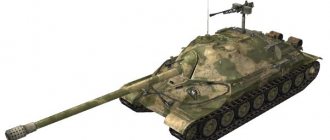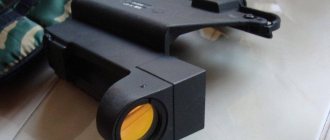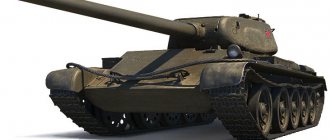At the end of the year, sales of the new inexpensive smartphone Poco M4 Pro 5G began in Russia. Giving gadgets and all kinds of electronics as gifts for the New Year is becoming a pleasant tradition, and such a phone can be safely added to the list of likely candidates for purchase.
Like other Poco devices, the new product is pleasing with its price-performance ratio, costs less than the psychological mark of 20,000 rubles and deserves attention. We get a large screen, 90 Hz support, fast charging and stereo sound.
Illustration: Svetlana Chuvileva / Wylsacom Media
By the way, in China the phone is known as Redmi Note 11, and in Russia it is Poco M4 Pro 5G. Friends from the friendliest gadget store, Big Geek, helped us find a smartphone for review.
POCO introduced M4 Pro 5G - the global version of Redmi Note 11
Kostya Baranov
9 November 2021
Appearance and comfort
As per tradition, I’ll start with the design. The phone is large and quite heavy – it weighs almost 200 grams. The thickness of the case is normal, the smartphone is not the thickest, but the module with camera blocks protrudes slightly above the surface, adding extra millimeters.
There are marks on the matte back of the plastic case when you use the device without a case. But the Poco M4 Pro 5G lies confidently in the hand, does not slip out and generally leaves a pleasant impression.
I had a phone in black, but it also comes in a beautiful blue and bright yellow version.
The fingerprint scanner located on the right side is responsible for data security. The button is not very large, but I did not notice any false positives with it. It’s convenient that you can customize how the button works: you can choose to touch or press for extra confidence. Plus, there remains a less reliable option with face unlock.
Advantages and disadvantages
The Benelli M4 shotgun has a certain set of individual pros and cons.
Among the strengths of a pump-action shotgun, we highlight:
- ease of maintenance;
- integrity of the shutter frame;
- large safety button, eliminating the possibility of an involuntary shot;
- for partial disassembly there is no need to use specialized tools;
- the presence of a mechanism for tightly fixing the butt;
- moderate recoil when firing magnum cartridges;
- almost silent charging;
- equipped with a smooth muzzle;
- clear descent;
- minimal sight drift after several shots, contributing to the ergonomics of the gun.
A great advantage is the presence of a Weaver rail, which significantly expands the possibilities for upgrading weapons.
The disadvantages of the Benelli M4 include:
- inconvenient shooting with the butt folded;
- the automation is designed to work exclusively with a fully compressed return spring, which limits the possibility of normal recharging in a number of situations;
- low frost resistance;
- medium lightness;
- the difficulty of effectively maintaining the phosphate coating of the barrel.
The high price of the Benelli M4S90 is due not only to its foreign origin, but also to the high costs of developing the technologies embedded in its design
Display
The diagonal is quite decent - 6.6 inches. I feel like a little more and 7-inch displays will become the standard in smartphones in a couple of years. There has long been no point in discussing the convenience of controlling it with one hand - the dimensions are such that it could be handled with two hands.
The picture quality is normal: the screen has an average brightness margin - I think that in the summer it may be difficult to read data on a very sunny day. But the display supports 90 Hz; this refresh rate is increasingly found in phones of this level. But it uses IPS, so the blacks aren't as deep as we'd like, and otherwise it's just a regular display.
From the screen settings, you can select three ready-made color profiles. The standard one produces the most natural colors, while the bright and saturated ones embellish the picture, giving out rich shades. The color temperature also changes, and the refresh rate can be lowered to 60Hz if you want to extend the phone's battery life.
I’ll also add that the display has a factory protective film pasted on it, protecting the surface from scratches.
Unpacking and packaging
The new generation of the Poco M4 Pro smartphone is delivered in bright yellow packaging, like any other model in the Poco line, by the way. On the front of the box I found only an inscription with the name of the model and company.
It is worth noting that the packaging itself was made of high-quality materials. Therefore, the device came to me for review without damage.
Inside the package I found an additional envelope containing a protective transparent silicone case, instructions and other documentation, and a needle for the SIM tray. Just below is the smartphone itself in a protective transport film.
But under the cardboard partition there is a power adapter with a power of 33 W and a Type-C charging cable. I can also remind you that in the last generation of Poco M3 Pro, the charging block had only 18 W of power.
Filling
The MediaTek Dimensity 810 chipset is a fresh solution introduced in the fall of 2022. This is a replacement for Dimensity 700 with all the ensuing consequences. The chip is made using a 6nm process technology and copes well with all tasks. Miracles don’t happen, so Genshin Impact won’t work here at maximum speed, but the phone can cope with regular games like tanks without overheating. If you test for throttling, the graph shows how the frequency drops by 20%. Not lethal for a simple phone.
When using it, it also does not lag or slow down, and overall it works well. All that remains is to advise you to choose the version with 6/128 GB of memory, and not 4/64 GB, if you still plan to actively play on the phone.
Is it worth getting the M4A1 Revalorise?
A lot of people liked the revolver. There are enough good reviews about it. And personally, I really liked the tank.
The M4A1 Revalorise is not a simple tank - it is cardboard with not very high mobility. Which requires attention. Although Revolver cannot be called overly skill-dependent - it is quite playable by average players.
High one-time damage with good weapon characteristics. The tank is very nice. The main thing is to understand its strengths and then shooting is more than simple. The M4A1 Revalorise is quite suitable as a “working” tank for farming silver.
Separately in appearance:
- Has a distinctive Sherman body. High profile, looks like a Goose.
- Legendary camouflage is missing.
- Revalorisé means “modernized” in French. That is, a direct modification of the American Sherman tank.
(click on the picture to enlarge)
Communications
From the name of the device it is immediately clear that there is support for 5G networks, but in our realities this is more of a “for show” opportunity. It's quite strange that in a large case there was no room for an extra slot. Therefore, you have to choose: either a SIM card with a memory card, or two SIM cards, but without additional memory.
But the advantages are support for NFC, Bluetooth 5.1, and the USB Type-C port is already a matter of course.
The phone also has a 3.5 mm jack for wired headphones on the bottom end, and an infrared port on the top. Poco M4 Pro 5G also received stereo speakers. On the one hand, two speakers are better than one. At least the sound is louder. On the other hand, the lower one plays louder than the upper one and some dissonance results.
Equipment for AMX M4 mle. 54
Despite the fact that the AMX M4 mle. 54 wot looks pretty good technically, this does not mean that the tank does not need some improvements. To improve the basic characteristics, additional equipment is installed on the machine. We recommend trying the standard option:
- Rammer – increasing the rate of fire, especially for the second gun.
- Stabilization – increasing accuracy.
- Ventilation – we get a comprehensive increase in the main parameters.
It makes no sense to install a camouflage net on a vehicle, given the barn-like design: it will not provide a noticeable increase in stealth. But you can try replacing the ventilation with coated optics if the viewing radius is a priority for the player. The anti-fragmentation rootstock will also perform well, which will help reduce damage from artillery hits.
Camera
The camera block looks impressive, but upon closer examination it turns out that there are not four lenses, as it seems at first glance, but only two. Let us rejoice that the phone did not add a stupid macro module and a separate module for processing frame depth. But the “plugs” on the body remained, although the two lower holes could, in principle, be hidden.
The main module is 50 megapixels, but by default the resolution of the pictures is lower: the frames are obtained in 12.5 megapixel quality. And the maximum mode can be enabled in the settings. There is also an 8-megapixel auxiliary wide-angle module.
Examples of the main camera in different conditions:
Indoors, in good light, you get a high-quality shot
Portrait with artificial background blur
Good quality front camera
Memorable photo with rare for Moscow -20°
In general, the idea of using one camera in all situations is a smart one. She copes well with portraits, using software processing to separate the background. There is no super macro here, but often in phones of this level you get a 2 MP camera, which is of no use at all and doesn’t boast macro shots.
This is how a wide-angle shoots:
The wide-angle lens takes decent pictures only in sunny weather, and even then it smudges around the edges
The camera feels normal, but it has no outstanding features and you won’t remember it as a standard. For example, the pictures lack detail and clarity, but this is the lot of an inexpensive device.
The main camera is capable of more in poor light - a separate night mode helps out, but not always. Often, along with it, we get even more noise - so by default, the automation copes better. In this case, it is better to hold the phone motionless: I took pictures in severe frost outside with gloves on, did it quickly, and then I was surprised why I got a bunch of blurry frames. It turned out that even in sunny weather it is necessary to freeze for a moment and not move.
Fat "A" with a plus
The story of the next modification of the Sherman, designated M4A4, was at first sad, like a story about a famous cartoon character who was “unlucky at first.” It didn’t go over well in its homeland, and then, when it was put to testing in the USSR, it didn’t make an impression on Soviet tank crews either. The combat qualities of the tank remained at the level of the usual M4A2, and the awkward 30-cylinder gasoline engine promised a lot of trouble. But in Great Britain the tank was greeted differently: it not only became the most popular Sherman in the Commonwealth armies, but also served as the chassis for the famous tank destroyer with a 17-pounder gun.
Not the hottest engine
We can say that the history of the Medium Tank M4A4 began in 1941, when the American military industry was rapidly gaining momentum. The army needed a huge number of tanks, and therefore, they would have to produce the maximum possible number of tank engines. They didn’t reinvent the wheel and designed the engine using the maximum number of existing components. The valve blocks and cylinder heads were taken from a Chrysler Royal six-cylinder engine with a displacement of 4.12 liters. Five of these engines with a reduced gear ratio were combined into a single massive 30-cylinder Chrysler A57 Multibank engine.
Due to the extensive use of cast iron, the new engine weighed almost 2.5 tons, making it the largest, heaviest, and one of the weakest engines in the Sherman family of tanks. It was originally designed for the Medium Tank M3 in the M3A4 variant, but just a month after its production began, the Sherman with the A57 Multibank engine, which was called the Medium Tank M4A4, also went into production.
Medium Tank M4A4 early series, front and rear views
Maximum braking power (measured at the engine shaft, before loss of power to the gearbox) of the Chrysler A57 Multibank was only 425 hp, 25 less than the lighter Ford GAA engine. Due to the large dimensions of the engine, it was necessary to lengthen the body of the tank, moving the bogies further apart from each other. As a result, the tank turned out to be heavier not only than other Shermans in its class, but even some variants with 76 mm and 105 mm guns.
However, the large and clumsy engine also had its advantages: it was believed that the tank could continue to move even with 12 out of 30 cylinders broken. The M4A4 could reach a speed of 40 km/h, and this was by no means the lowest in the family. The tank did not lose weight due to its ammunition load and carried 97 shells for the 75 mm cannon - the same as its counterparts. The armor was also not thinned out: the M4A4 received a welded body of five parts with a “forehead” thickness of 51 mm at an angle of up to 56°.
The new engine was first installed on the tank on November 15, 1941, and the prototype was rolled throughout the winter of 1941-1942. — in total he covered an impressive 6,500 km. Based on the test results, the engine design was modified, and the tank was put into production in July 1942.
The increased distance between the bogies makes it easy to distinguish the Sherman Mk.V standing behind from, for example, the Sherman Mk.IC in the foreground
Subsequent tests at Fort Knox showed that the engine was indeed not reliable enough, and all vehicles were removed from testing after 200 hours of operation. The reason for this was burning of the exhaust valves and wear of the piston rings. Representatives admitted that Multibank was not an ideal engine, but at that time there was nothing to choose from, and they continued to install it on tanks. In total, the Detroit Arsenal plant produced 7,499 M4A4 tanks under contract W-ORD-461, which were assigned registration numbers in the ranges USA 3056615-3058014, 3016861-3020860, 3029082-3031158, 3031162-3031182. The American military did not like the tank, and it was not approved for combat operations outside the United States. All M4A4s remaining in American service were used only for training purposes.
There is one interesting episode associated with the W-ORD-461 contract. It also included 1,600 Medium Tank M3 tanks, but only 1,599 were built: Chrysler considered the prototype part of the series, but the Detroit Arsenal disagreed. When the mistake was noticed in the spring of 1943, the M3 was no longer needed, and it would have been difficult to release it after the end of the series. Instead of the missing M3, it was decided to assemble one additional M4A4. The “extra” tank was given serial number 56620 and registration number 3098786.
Chrysler A57 Multibank engine
In addition to the lack of engine reliability, tests of production tanks revealed a problem with the ventilation of the fighting compartment. After firing 30 shells in volleys of five with a 5-minute break between volleys, the concentration of carbon monoxide in the tower became hazardous to health. The eyes of those in the tower began to water so much that they could not see the target.
Production of the Medium Tank M4A4 ceased on September 10, 1943, but the history of its production did not end there. Already in the late autumn of the same year, tanks began to be modernized. They received an improved Oilgear turret turning mechanism, an M34A1 cannon mount, a fan in the turret, armored ammunition racks, a hole for installing a 50-mm breech-loading mortar, shielding of side and frontal armor, as well as track tracks with a steel tread instead of rubber. To increase the reliability of the chassis, the tanks were equipped with a new clutch, the engine received chrome-plated piston rings and the exhaust valves were filled with sodium, which improved their cooling. By June 13, 1944, 1,188 tanks had been modernized, and another 350 were completed by August.
The fighting compartment of the M4A4 was not very different from that of other Shermans.
Tests of modernized tanks showed the effectiveness of the measures taken. Engine reliability has increased noticeably: out of four tanks, one was removed from testing after 339 hours, the rest worked for 400 hours. It cannot be said that such a run was easy for the tanks: it took an average of 608 man-hours to service each tank during the run. The transmission (300 hours) and chassis (228 hours) required the most attention. Many parts, including the clutch, final drive gears and carburetor limiters, were replaced several times. The tanks reached an average speed of 22 km/h on the highway, 12 km/h on sand and 10.5 km/h on rough terrain.
The remaining units of the tank were not as durable as the engine. During a separate 2,000-mile (3,218 km) test run, bolts repeatedly came loose. After 817 km, the accordions of both exhaust pipes broke, and after 1096 km the starter failed. The rubber tires of the right idler were destroyed after 1189 km, the left - after 2250, the bolts of the supporting rollers broke after 1983 km. Also, 10 suspension springs failed, each of which traveled an average of 2,424 km. During testing, the tank consumed 442 liters of fuel per 100 km.
"V" is for Victoria
The Americans sent the tank, rejected by their own military, to the allies. As mentioned above, the USSR refused such tanks, but Great Britain happily accepted almost all of the M4A4s produced. According to the British system, the tank was called Sherman Mk.V - this was the fifth version received by the British. The designation "M4A4 Chrysler" was also used quite often in correspondence.
The first Sherman Mk.V was accepted for testing on September 14, 1942. It seems that the tanks had problems with maneuverability, since almost immediately it was recommended to install 80 lugs on them. The request was rejected. In general, the British were satisfied with the new tank, and 329 vehicles were allocated for the needs of the British army in September; in January 1943, they planned to allocate as many as 650 tanks. Later it was decided to send all produced M4A4 tanks to the UK.
You can distinguish the British Sherman Mk.V from the American M4A4 by its body kit: at the rear of the turret and hull there are large boxes for the crew’s personal belongings
Despite American skepticism about the strange engine, the British military in the winter of 1942-1943. They only complained about the grip when operating in dust and sand. In all other respects, the tank was absolutely satisfactory to them. I also liked the car for aesthetic reasons. According to Canadian units in Sicily, the quality of its finish was much higher than that of the Sherman Mk.III tanks.
By the spring of 1943, the tanks had undergone thorough testing. It was found that the Westinghouse turret traverse mechanism only behaved well when the tank was level. If the tank stood on a slope, the unbalanced turret began to affect the operation of the mechanism. He used 1.6-2.3 times more electricity to rotate the turret at a roll of 16° compared to working on level ground, and at a roll of 30° he could no longer turn the turret. The British liked the Westinghouse brand movement more than the Logansport brand, but less than the Oilgir brand. The latter could smoothly track a target at medium distances, and the Westinghouse noticeably jerked the turret when turning slowly to the right and at all speeds when turning left. The Westinghouse had one advantage over the Oilgir - duplicate control for the commander, who could himself direct the gunner to the spotted target.
The crew of the Sherman Mk.V tank during an exercise. England, June 1943
The British tank crews did not like the stabilizer, since the gunner quickly got tired when working with it. A survey of the American attaché in British units showed that this opinion was almost universal. Of the several parts surveyed, the stabilizer was approved in only one.
Tanks were not spared in the armies of the British Commonwealth. For example, Group E of the Canadian Reserve Unit (CRU) “finished off” 17 tanks out of 48 before being written off. They were dragged to a shooting range, where they were used as stationary shooting targets.
In early 1944, Commonwealth tankers began replacing American-style commander's cupolas with a domestic design, the so-called Commander's All Round Vision Cupola. The turrets were developed for British tanks, but with the help of an adapter they could be installed on the Sherman. Samples of non-armored steel turrets were ready back in January. The British wanted to install such turrets on all American tanks, but they couldn’t. Most Sherman Mk.V tanks left for the mainland without this modification.
In February 1945, the name of the turrets was simplified. Now they are called Vision Cupola No. 1. By that time, there were already two versions of the turrets: Mk.I (hatch doors without springs) and Mk.II (hatch doors with springs). On the Mk.II, the positions of the episcopes also changed: instead of one movable in the vertical plane and seven fixed episcopes No. 4, there were seven fixed episcopes No. 5 and one movable No. 6. In both cases, the movable episcope looked backward.
On the left is a diagram of the All Round Vision Cupola commander's cupola, on the right are the viewing sectors from it. The commander could observe half the battlefield without turning his body
Unlike the Americans, who produced M4A4 tanks in one modification, the British converted the resulting tanks into many variants. The most famous of them is the Sherman Mk.VC, known under the unofficial name Firefly. Its 76mm 17-pounder gun became a formidable argument against the German Tigers and Panthers, but this tank is worth talking about in a separate article.
Sherman Mk.Vs were also made into tanks for commanders (Command or Control Tanks) and artillery observers (Sherman OP). Command tanks were equipped with two sets of Wireless Set No. 19 radio equipment. Tanks for artillerymen received an additional transmitter No. 18, as well as two portable transmitters No. 38. The gun was replaced with a dummy, and a card table was installed instead of the bolt. The artillerymen did not like this situation, since the tank remained defenseless against targets that were invulnerable to machine guns. Instructions were issued to create an "intermediate" variant that could still fire. The right front ammunition rack for 17 rounds was removed from the tank, as well as 8 shells from the stowage on the floor of the fighting compartment, 18 boxes of .30 caliber cartridges and the right lamp of the fighting compartment. Instead, the tank was equipped with a second transmitter No. 19, four batteries, an additional antenna, a table for the radio operator and boxes for the stereo tube. The tank commander received two radio switches, and the radio operator received one. Thus, the first Wireless Set No. 19 was used as before, and the second block “A” was used as a transmitter and as a receiver. Block “B” of the second Wireless Set No. 19 was not used.
The Sherman Adder flamethrower tank was also built on the Sherman Mk.V chassis. The prototype was ready for testing only in April 1945. The Adder flamethrower made it possible to fire up to 30 shots lasting one second each at a distance of up to 80-90 yards (73-82 m). The flamethrower could be rotated 75° left or right, raised 45°, or lowered 10°. The flamethrower was aimed through sight No. 65, which replaced the driver's assistant's periscope. The flamethrower itself was placed on its hatch.
This is a rather blind diagram, but nevertheless gives an idea of the Sherman Mk.V Adder flamethrower tank.
The tank didn't turn out very well. The flamethrower worked satisfactorily, but the 2.5 tons of additional weight had a negative impact on the reliability of the chassis. During the 500-mile (805 km) test run, 11 of the tank's roller tires burst. The average service life of one bandage was only 286 km. The flamethrower itself was also found to have three defects, one of which was considered serious. The aiming wheels were very tight, making it difficult to aim the flamethrower when the tank was standing still, and almost impossible when moving. The “plump” tank could no longer be lifted by the 30-ton Universal Sling lifting equipment. The flamethrower at the rear of the tank exceeded the permissible dimensions and made it difficult to access the track tensioning mechanism. Unlike the M6 periscope, the No. 65 peritelescope was very difficult to rotate. The shooter had to rotate the sight with one hand and fire the machine gun with the other, which did not add to the effectiveness.
This option was not widely used: from the initial order for 300 Vipers, only 200 were built (150 on the Sherman Mk.V chassis and 50 on the Sherman Mk.III chassis). Almost all of the Adders were sent to India.
Touring Europe
Serving as the most popular tank of the armies of the British Commonwealth, the Sherman Mk.V was widely used in Italy. Here the tank discovered new problems. The rubber tires of the rollers had not shown their best performance before, and the heat and stones typical of southern Europe wore them out even faster, especially when using all-metal T62 tracks. They were able to reduce the destruction of the tires by ordering the crews not to drive at speeds above 32 km/h and to pull the tracks as tightly as possible. Already known problems with the exhaust system and clutch made themselves felt. In combat conditions, the engines turned out to be far from being as reliable as they showed themselves in “sterile” tests. Field tests have shown that suspension failures occur no more often than on other Shermans, despite the extra weight.
Sherman Mk.Vs of C Squadron, 8th Princess Louise's Hussars (New Brunswick) fire at a road intersection. Tollo, Italy, February 4, 1944
There were also shortcomings in terms of convenience for the crew. It turned out that, unlike the Sherman Mk.III, the driver had nowhere to put his left foot, and he had to keep it suspended above the clutch pedal, which was unacceptable. The British also had to weld a bar to the pedal to prevent the driver’s foot from slipping off it.
In addition to their usual role, tanks were used as self-propelled guns, firing from indirect positions. The stern of tanks was often dug into the ground to increase the elevation angle of the gun. The 75 mm gun was suitable for the role of fire support. Knowing that they would have to shoot a lot, and that it would be difficult to transport shells in the mountains, the tankers loaded the ammunition anywhere, carrying up to 200 shells with them. This decision sharply increased the risk of detonation when the armor was penetrated, but the tankers believed that the gamble was worth the candle. In addition to standard shells, tankers carried with them blank cartridges for a 75-mm howitzer to dislodge stuck shells from the barrel.
Meanwhile, complaints from the front continued. Thus, mortars for releasing smoke grenades, which the British liked to install on their tanks, turned out to be very vulnerable - they were blown away by branches when driving through the forest. However, the tankers were not too worried about this, since the two-inch mortar in the turret was a satisfactory replacement. The commanders who did not receive the All Round Vision Cupola complained that the American cupola was too heavy and turning for any length of time was a very exhausting task.
Canadians and Dutch: Sherman Mk.V of the South Alberta Regiment. As additional protection, the tankers welded Panther track tracks to the turret. Wide tracks of German origin are also visible on the front plate. Bergen op Zoom, Netherlands, October 1944
As a result, the opinion of the British tankers nevertheless coincided with the opinion of the Soviet ones: the Sherman Mk.III (M4A2) is still better than the Sherman Mk.V. In British hands, the A57 engines were not as reliable as the GMC diesels. Many tankers who were transferred from “threes” to “fives” protested, but over time the complaints subsided.
In addition to official modifications, the tanks were overgrown with many field improvisations. For example, according to British tank crews, refueling Sherman Mk.V tanks took too long. Changing the fuel neck and filter made it possible to reduce the refueling time by almost half. One tank brigade commander ordered a step welded onto his Shermans to make it easier for infantry to climb onto the tank and talk to the crew.
Based on the results of service in Italy, the British command decided that the Shermans, compared to the Churchills, were more vulnerable in battle and could not be used in the same way. Since the landing in Normandy, the difference in effectiveness between the Armored Brigade with Shermans and the Tank Brigade with Churchills has become quite clear. At the same time, the differences in personnel between the formations were not so significant, and brigade commanders independently developed their own battle tactics.
This is what a British armored regiment looked like, armed with Shermans. The structure of the Cromwell regiment will be obtained by removing the fourth tank from the detachments
Each brigade consisted of three tank (armored) regiments and one motorized infantry battalion. Each regiment consisted of three squadrons, each squadron had four detachments. One detachment consisted of four Shermans or three Cromwells, respectively. In the detachments with Shermans, one tank was armed with a 17-pounder gun, except for the headquarters detachment, which had three Shermans with 75-mm cannons. The regimental headquarters detachment had four 75 mm tanks. Each regiment also had a reconnaissance detachment of light tanks and a detachment of anti-aircraft, communications and administrative vehicles.
By the summer of 1944, the firepower of the 75 mm gun was no longer enough. The armor-piercing shell was not effective against heavy German tanks and did not even always penetrate later versions of the PzIV. The high-explosive fragmentation shell remained a powerful tank weapon, but shooting at well-camouflaged anti-tank guns was difficult. From 2,000 yards (1,829 m), the tanks had to fire about 15 shells to hit the target. By the way, shooting at very close targets was also difficult, and British instructions advised aiming the cannon through an open bolt. By drilling a hole in the bottom of the cartridge case, it was possible to create a simple sight.
Canadian tanks "Sherman" Mk.V of the Governor General's Horse Guards. Sonsbeck, Germany, spring 1945. The tank in the foreground is wrapped in camouflage netting. It also features the “Duckbill” attachments, which increase the width of the track and improve maneuverability.
The Shermans' armor did not allow them to safely approach enemy guns, and the thickness of not only the forehead, but also the sides was to blame. An examination of destroyed tanks showed that strengthening the armor to a thickness capable of repelling 50% of hits would have reduced the number of total penetrations by only 15%. Thus, it was impossible to “ram” enemy anti-tank defenses with Shermans, and the British had to work closely with artillery. An attack on an unsuppressed anti-tank line could end very badly.
Cutting off infantry from attacking tanks also created a mortal danger, since the tanks were vulnerable to the Faustians. Improvised screens provided some protection against early examples of Faustpatrons, but large-caliber later versions were capable of penetrating even such armor. As a result, the survivability of the Shermans in battle was proportional to the level of interaction with other types of troops, and it always left much to be desired. Infantry and tanks, in order to understand what they wanted from each other, had to fight side by side for several days, which was not always possible due to the constant transfer of tank formations from one infantry brigade to another. Nevertheless, tankers and infantrymen often found a common language.
British Columbia Dragoons on review, May 23, 1945. The regiment is armed with Sherman Mk.V and Mk.VC tanks
The tanks that did so much to bring victory closer did not last long in the British troops: the Sherman Mk.V never received a 76-mm gun, and the British saw cruising tanks with 75-mm guns back in 1942 only as a temporary measure. By the end of the war, the British tank industry was ready to replace them with more advanced Comets and Centurions, and therefore British and Canadian Shermans were sold around the world. The cars remaining in England were sold for scrap. The Multibank engine could be purchased for £19, and the tanks themselves sold for as little as £4 per ton. At home, in the USA, the M4A4 was also declared obsolete in the fall of 1945.
Not all tanks have retained their appearance. For example, Sherman Mk.Vs sold to India were equipped with 76 mm cannons from Soviet PT-76 tanks. In Israel, tanks were even equipped with new turrets with powerful French 75-mm CN-75-50 cannons. It seems that the Israelis didn’t like the Chrysler engine either, and they replaced it with more reliable gasoline Wrights or GM diesels. These tanks were called "Super Sherman" or "Sherman" M50. The additional load on the suspension made itself felt, and after only 50 Super Shermans were produced, production was replaced by the more powerful Sherman M51 tank, created on the basis of the more advanced M4A3.
Sources and literature:
- P. Ware. M4 Sherman Tank 1941 onwards (all variants). Owner's Workshop Manual
- R.P. Hunnicut. Sherman: A History of the American Medium Tank
- J. Buckley. British Armor in the Normandy Campaign 1944
- Photo archive Dept. of National Defense / Library and Archives Canada
- Canadian Military Headquarters Archive, London (1939–1947) RG 24 C 2
- TM 9-754 Medium Tank M4A4
- https://www.theshermantank.com
Autonomy
Included with the phone is a 33 W power adapter. Charging is quite fast: the battery is charged to 50% in half an hour, and an hour is enough to fully charge.
The battery life is normal: the phone lasts a day, you can get one and a half days, but it all depends on the usage scenario. For example, if you watch a video on YouTube, the phone shrinks by 7-8% per hour at about 70% brightness. In games, it discharges by 17-20% in the same hour.
AMX M4 mle crew skills. 54
An additional option to increase the effectiveness of a top “French” in battle is to train tank crews. The crew of the equipment consists of 5 people, so we recommend upgrading your skills in the following order:
Do not neglect or ignore military consumables, which come to the rescue in difficult situations. Therefore, we make sure to select a repair kit, a first aid kit and a fire extinguisher from the hangar, and be sure to check the box for automatic replenishment.
It is not yet known how flammable this vehicle will be in case of critical engine damage. If the tank is the proud owner of a durable transmission, you can ditch the fire extinguisher and take coffee and croissant into battle to get an extra boost to your combat performance.
Price
In Russia, the phone is sold in two versions: the basic model with 4 GB of RAM and 64 GB of internal memory costs 17,990 rubles. There is also a more powerful version: it has 6 GB of RAM and 128 GB of internal memory, and costs 19,990 rubles.
Perhaps, looking at the price of the phone, the question will arise: why does it cost under 20,000 rubles, and not 15,000? But it will not be me who will answer, but the crisis of semiconductors and the general shortage in the electronics market.
Illustration: Svetlana Chuvileva / Wylsacom Media
Tactics for playing with M4
The specialty of the M4 rifle is its versatility. You can attack opponents at long range and close, shoot through doors and other easy cover. Thanks to your mobility, you can easily deal with several slow enemies.
If there are large open areas on the map, take a convenient shooting position that offers a view of the passages. It is very important that there is cover nearby - if there are a lot of enemies, you will have to hide and reload. Take advantage of your rate of fire, shot accuracy and aiming speed.
When playing against snipers, focus on maneuverability. It will be a little inconvenient for you to aim while moving, but the ability to quickly move will allow you to run from cover to cover and get close to snipers. Here their effectiveness drops to zero and you can easily make a frag.
Don't forget about the shots! Use them to “check” the gates on Sandyards, to destroy opponents behind shields on the Training Outside and Arena maps.
Impression
In a world where phones are so similar to each other, devices with well-balanced capabilities are always held in high esteem.
Poco M4 Pro 5G has smooth operation, stereo speakers, good battery life, fast charging and decent performance. But at the same time, this is IPS, not AMOLED, and I expected more from the camera. As a result, we get a phone for those who do not demand the impossible from a smartphone, but at the same time do not want to buy the most budget device like the Poco M3.
Reservation AMX M4 mle. 54
Let's move on to the second positive news - the security of the alternative branch of machines. Of course, AMX M4 mle. 54 is inferior in this regard to the “Germans” and “Soviets”, but still does not seem like an easy prey.
Front view
So, the most protected element is the frontal projection of the turret, where there are 300 millimeters of armor, complemented by an impressive gun mantlet. Consequently, it is possible to penetrate the “Frenchman’s” tower head-on only with gold, and then with the favor of the FBR.
Side view
With the side elements, things are much worse: 80-mm armor plates are installed here, which can be easily penetrated even by “eights”.
If we talk about the frontal armor of the hull, we have a 220-mm VLD, located at a good angle. The lower frontal part looks expectedly weak: only 125 mm. The side projection is protected by 60 mm armor.
In general, the tank is well protected, and is quite capable of tanking damage on city maps, however, it should not be considered invulnerable, much less immortal. The turret, well protected in the front part, has 2 well-protruding hatches, which will not be difficult for opponents to target and penetrate.
View from the rear
In addition, the 40 mm roof will become a tasty morsel for artillery, and land mines will enter here with maximum damage. The situation with the rear compartment is also unfortunate: 40-mm armor plates are used here as protection, so turning your rear towards someone is highly not recommended.
Poco M4 Pro 5G Specifications
- OS: Android 11 and MIUI 12.5;
- Chipset: MediaTek Dimensity 810;
- Memory: 4 GB RAM, 64 GB permanent, microSD slot;
- Screen: 6.6″, 1080 × 2400, 90 Hz, IPS;
- Cameras: main 50 MP (f/1.8), wide-angle 8 MP (f/2.2), front 16 MP (f/2.45);
- Communications: Wi-Fi 802.11ac, Bluetooth 5.1, NFC, GLONASS, GPS, infrared;
- Battery: 5000 mAh, fast charging 33 W;
- Dimensions: 163.6 × 75.8 × 8.8 mm;
- Weight: 195 g
I would like to thank the friendliest gadget store, Big Geek, for the smartphone I provided.
Review of available skins
At the time of writing this guide, there are 6 skins available for M4 in Standoff 2:
- Rare “PRO”
from the Furious case.
- Epic “Grand Prix”
from the Rival case.
- The legendary “Night Wolf”
from the Scorpion case.
- The legendary “Lizard”
from the Fable case.
- Mythical “Samurai”
from the Fable case.
- Award “Pixel Storm”
from the competition collection. Available to celebrate the release of ranked games.
